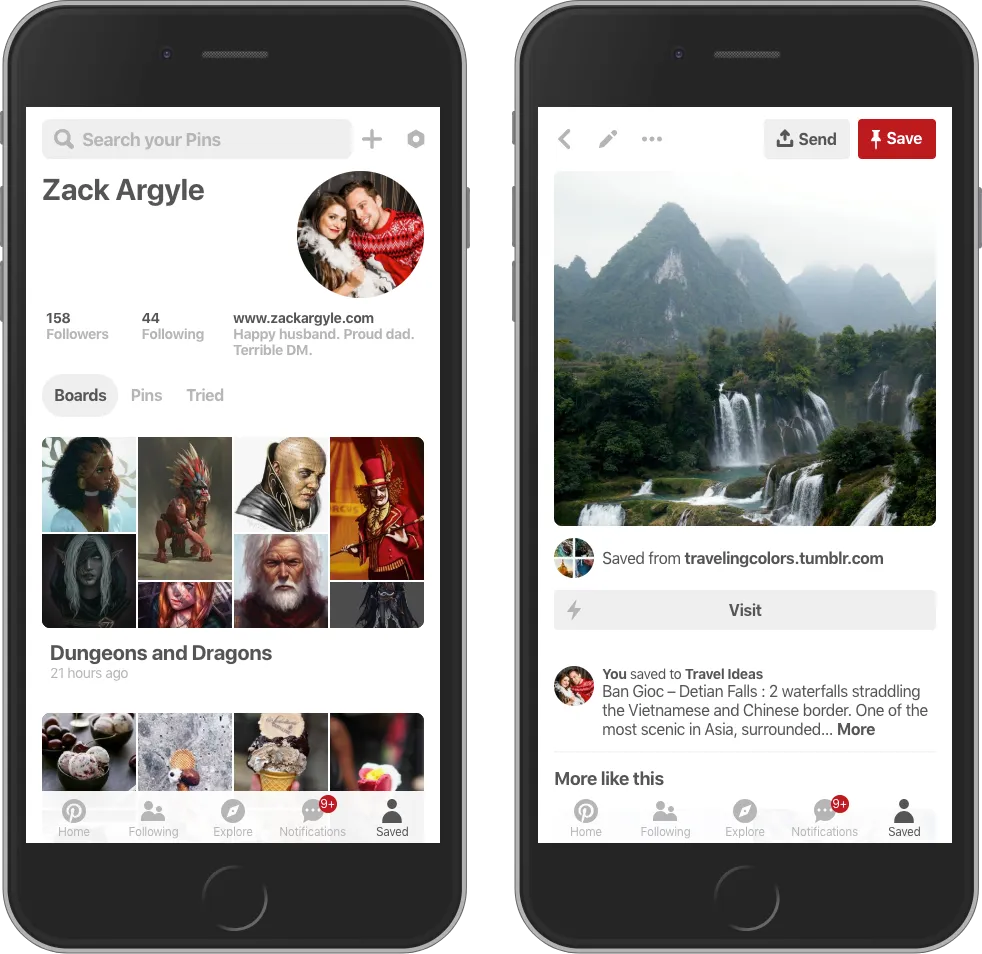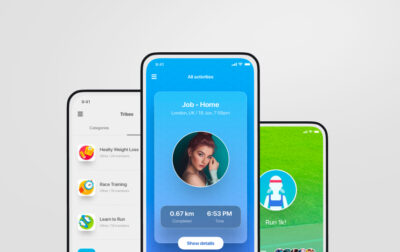Building a PWA vs a native app: Which offers more value for your operations?
Intro
In 2024, internet traffic continues to be dominated by mobile usage, with over 62% of sessions coming from it. With the continued rise of mobile comes a user expectation. It is not enough to make sure your website is optimized for mobile device owners – these users now want a feel that is close to using an app.
Which means determining whether to opt for a native app or a more modern option – PWA – is essential to give your audience the user journey it hopes for. In this blog article, our team at Touchlane will go over the essence of both types of apps, explain how they are built to operate, and list their advantages. So, if you want to know which one can be a fit for your organization, you have landed in the right place.
Understanding PWAs
Essentially, a PWA is a website that uses contemporary technologies to grant a feeling that is nearly identical to the one of a native app. The concept was first introduced in 2015 and grew in popularity following successful use cases from Pinterest, BWM, and Lancôme.

Source: Pinterest Engineering
For PWA app development, engineers use HTML, JavaScript, and CSS. They run and display just like typical web pages, so internet browsers may search them.
PWAs: How they operate and why they matter
Primary elements
The workflow for building a progressive web app is defined by combining three components:
- Service workers. These scripts serve to guarantee a reliable application experience, even when connectivity is unstable or unavailable, by efficiently handling network requests and caching.
- HTTPS. By enforcing a secure connection, PWAs not only protect user data but also foster trust and confidence in the application.
- Web app manifest. This is a JSON file that contains vital metadata about the PWA, such as its name, icons, and installation behavior. It empowers the app to be added to the home screen.
Saving costs
PWAs are a solid alternative to native apps. Businesses can satisfy the heightened demands of mobile consumers, save development-related expenses, and support user retention by rolling out PWAs. If you are a smaller company looking to tap into the mobile market, you may consider this as an intermediate option.
Fast launch
Once developed, PWAs can be deployed and updated almost instantly. For businesses, this means you can run ahead of competitors, specifically if you are launching an innovative or niche app.
Interactive experience
As opposed to conventional web apps, PWAs present a quicker, more reliable, and more entertaining interaction. Hence, you can win your audience by giving it what it wants.
What is native mobile app development?
Native applications are produced for distinct platforms, namely iOS or Android, adopting coding languages and technical tools tailored for all compatible platforms. They are reachable via a dedicated app store.
In general, native mobile app development presents the following benefits:
Top-tier performance
Native apps are intended for a phone’s OS, which means they are adjusted for optimal speed and efficiency. Everything is stored natively on the device, so there is no need to pull content from the web. This results in an effortless and dynamic user journey.
Reinforced security
Programmers craft native apps with a designated OS as their goal, which means they are more reliable security-wise. Concurrently, PWAs depend on browsers and other underlying tech (JavaScript, HTTP5) in terms of data safeguarding.
Increased interactivity and intuitive usability
For user input and output, native mobile applications facilitate a more cohesive journey. They work in harmony with the device’s OS, maintaining a uniform aesthetic and interaction style. Native apps also follow strict operating system guidelines that improve ease of use and match the OS’s flow, leading to an easier-to-understand experience.
Unrestricted utilization of technical capabilities
Native applications possess the ability to communicate directly with the hardware components of the device, including the microphone or the camera, which boosts operations since the software and OS can work to their fullest.
Fewer bugs
Crafting native apps with platform-oriented tools reduces technical dependencies, which minimizes the risk of bugs and as opposed to developing from a singular codebase for both ecosystems. By focusing on individual OS, developers can harness unique characteristics and refine performance, resulting in a more favorable overall user journey.

How to choose between a native app and a PWA app from a business perspective
Ultimately, it all comes down to the question of weighing the options of PWAs versus native apps. So, which one suits the demands of your business the most? At Touchlane, we recommend thinking about the following:
Time-to-market
Native apps are incredibly adaptable, yet, in the development of native apps, such customization takes time. Since a PWA taps into the capabilities of an existing browser, it takes less time to complete. However, PWAs sacrifice rich functionality and personalization for speed. What is more important for your business?
Cost
Although building a native application is significantly more expensive than creating a PWA, if your software needs to be long-lasting and have a high level of user involvement, the investment will eventually pay off, especially if you come up with a good monetization strategy.
Security
With the option to incorporate extra security layers, native apps generally enable more robust security measures. PWAs depend on the browser’s safety features, which is still viable but might not be enough for sectors with more stringent security requirements.
Maintenance
Updating native apps requires more effort from both developers and users, who need to download and install the new version. PWAs are generally easier and cheaper to update since developers need to work with a single codebase. Yet, bringing native apps up to date regularly gives users better compatibility with the latest OS versions and new hardware.
Functionality and scalability
While sufficient for simpler applications, PWAs offer very limited features and growth potential. If you need an application for the long haul, native app development is a better choice, since they are unparalleled in terms of scalability and performance.
Industries
If your company operates in a sector that demands constant user engagement and cutting-edge features – like fintech, healthcare, and productivity – native apps are the clear choice. You may do with a PWA if you work in news and media, travel and hospitality, and fitness.
Installation and app store presence
Native applications have an unmatched advantage of being distributed through an app store, giving businesses easy access to a huge audience, if optimized properly. For PWAs, installation is unnecessary for these apps as they launch from the device’s web browser. They are discoverable through search engines, so SEO is crucial with them.
Productivity
Native apps excel at handling resource-intensive tasks like real-time calculations or high-level performance that demands direct access to device hardware. PWAs are limited by the browser’s processing power, which can be advantageous for lower-end devices but restricts the app’s overall performance.
To sum it up, we recommend choosing PWAs in the following cases:
- You operate with a tight budget and aim for rapid market entry
- You aim to connect with a wide audience with little access hurdles
- Your app does not rely on particular device features.
With native apps, our team suggest going for them if:
- Your business depends on app store presence and strong user engagement
- You are focusing on a defined user base and working to create lasting engagement
- Top-tier performance, complex features, and advanced hardware integration is crucial for your application’s functionality.
Conclusion
Making your choice between a PWA and a native app ultimately relies on your business targets, industry, and the user interaction you aim to cultivate. PWAs present a cost-saving approach, they are quicker to deploy, and ideal for organizations that focus on accessibility. However, if your venture calls for superior functionalities, a native app is likely the more suitable option.
If you are leaning towards a native application and would like to get a better view of how it can benefit your audience, we at Touchlane will be happy to evaluate your specifications and suggest a plan for making it work.
FAQ
1. Can I use PWAs for any business sector?
So far, we can safely say that while PWAs are a solid choice in selected industries, they serve varied purposes in contrast to native apps. In some business domains, such as fintech, gaming, and entertainment, they are hardly relevant at all. PWAs offer speed and minimal barriers for market entry, while not requiring use of specific features of devices. Native apps are, essentially, more about building long-term connections with your audience and establishing your presence in the mobile market.
2. How do the user journeys of PWAs and native apps differ?
If you assess PWA performance vs native apps, the latter facilitate quicker user interactions due to their direct connection to the OS. While PWAs offer decent performance, they are constrained in their attributes.
3. In the long run, where does a native app stand vs a PWA?
PWAs have risen in popularity over the last decade due to successful use cases from global brands. It is unclear if they can retain popularity in the future, since tech trends change all the time. Native apps, however, will be around as long as people continue using smartphones or tablets. Cost-wise, if you think about long-term investment into your business’ success, it is always safer to go for the trustworthy option.
RELATED SERVICES
CUSTOM SOFTWARE DEVELOPMENT
If you have an idea for a product along with put-together business requirements, and you want your time-to-market to be as short as possible without cutting any corners on quality, Touchlane can become your all-in-one technology partner, putting together a cross-functional team and carrying a project all the way to its successful launch into the digital reality.
If you have an idea for a product along with put-together business requirements, and you want your time-to-market to be as short as possible without cutting any corners on quality, Touchlane can become your all-in-one technology partner, putting together a cross-functional team and carrying a project all the way to its successful launch into the digital reality.
We Cover
- Design
- Development
- Testing
- Maintenance











